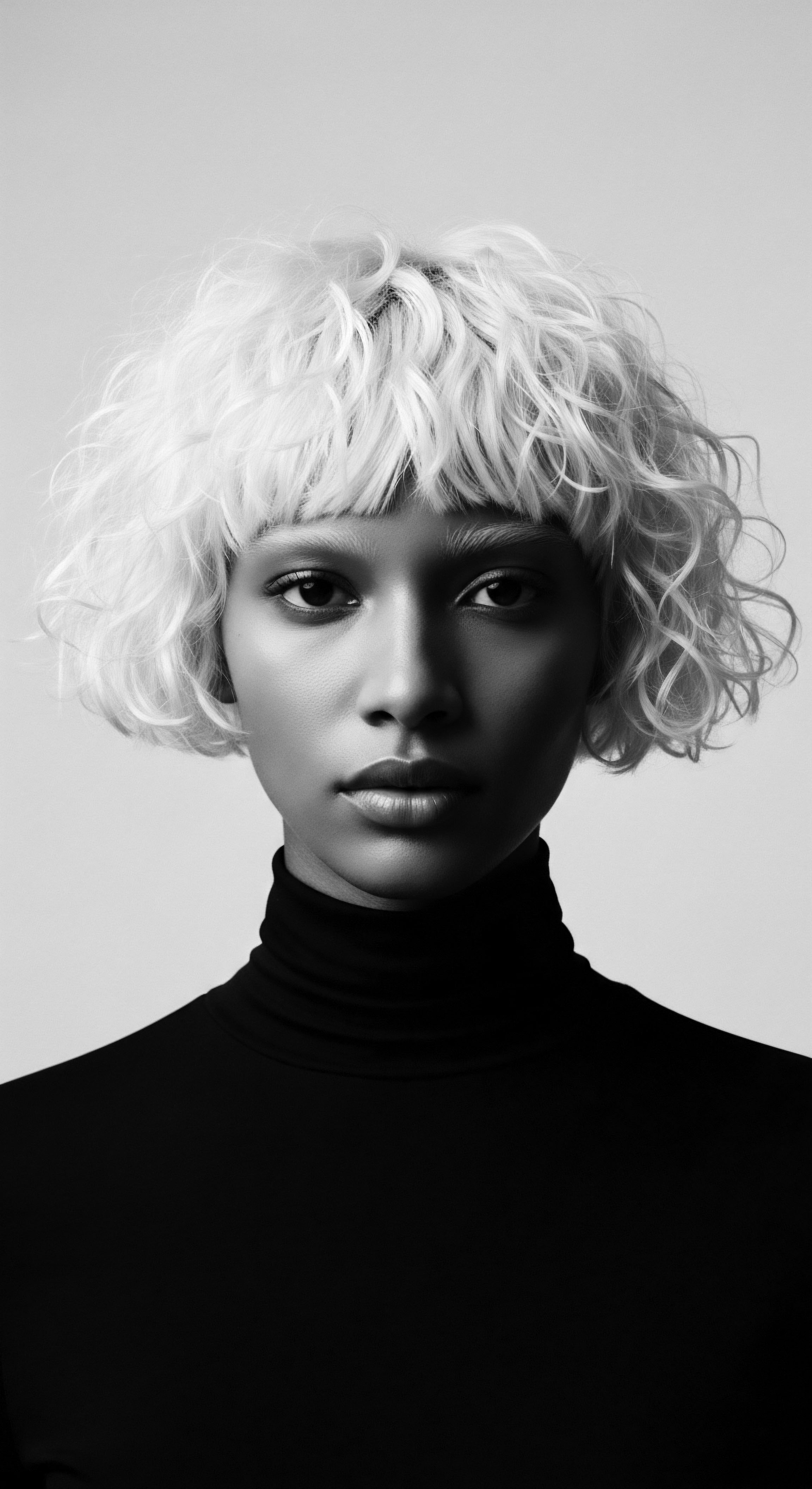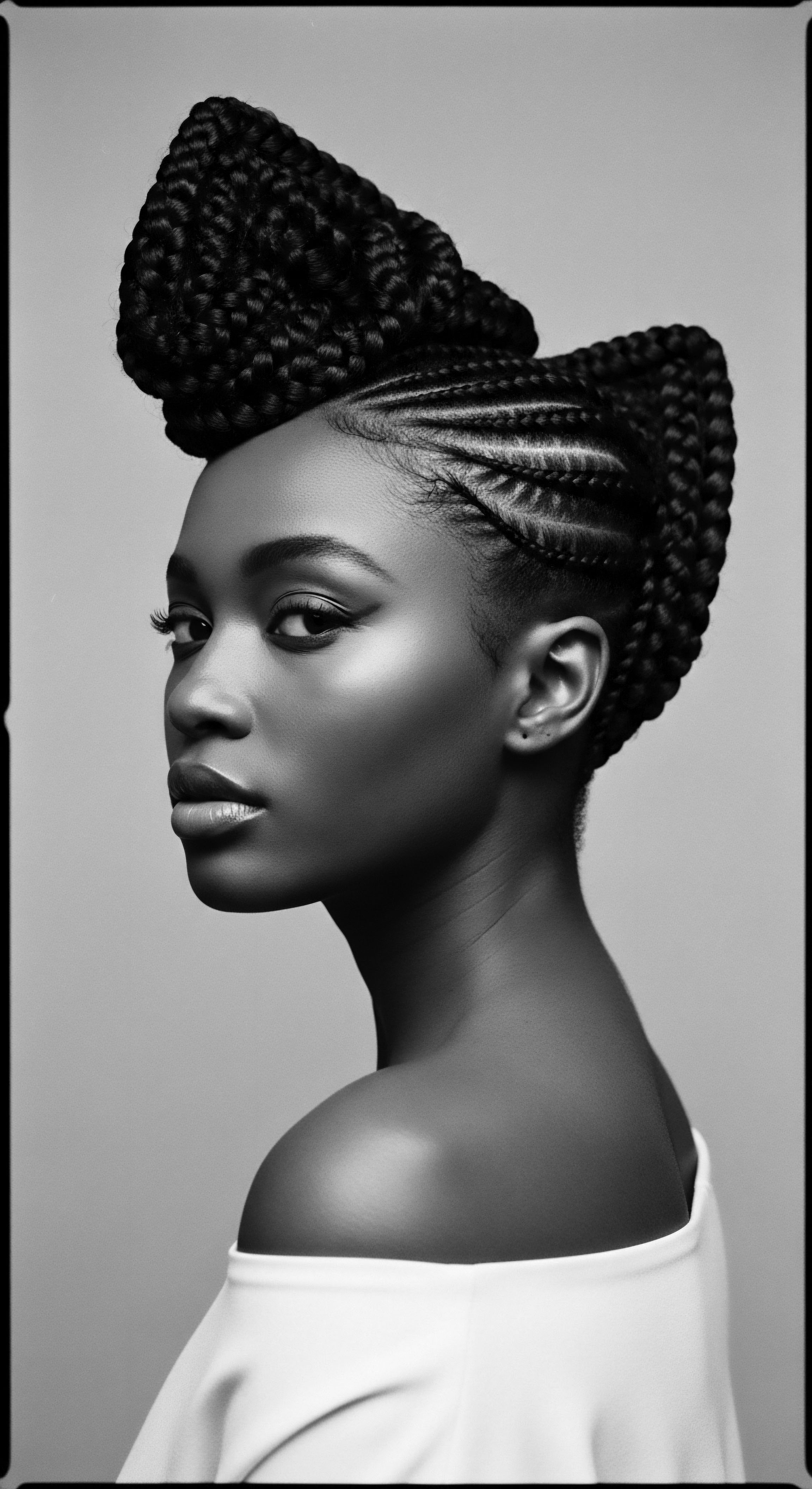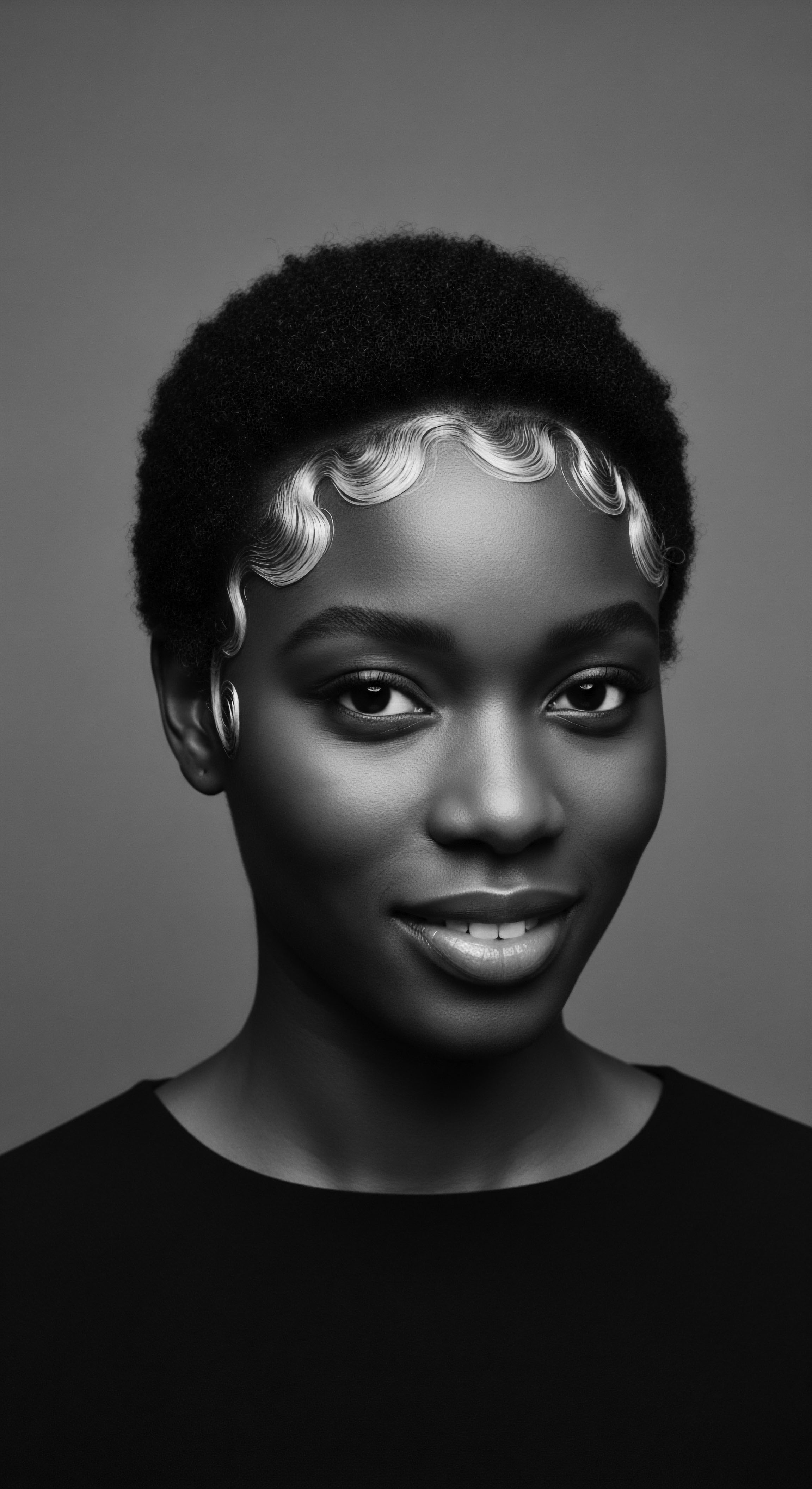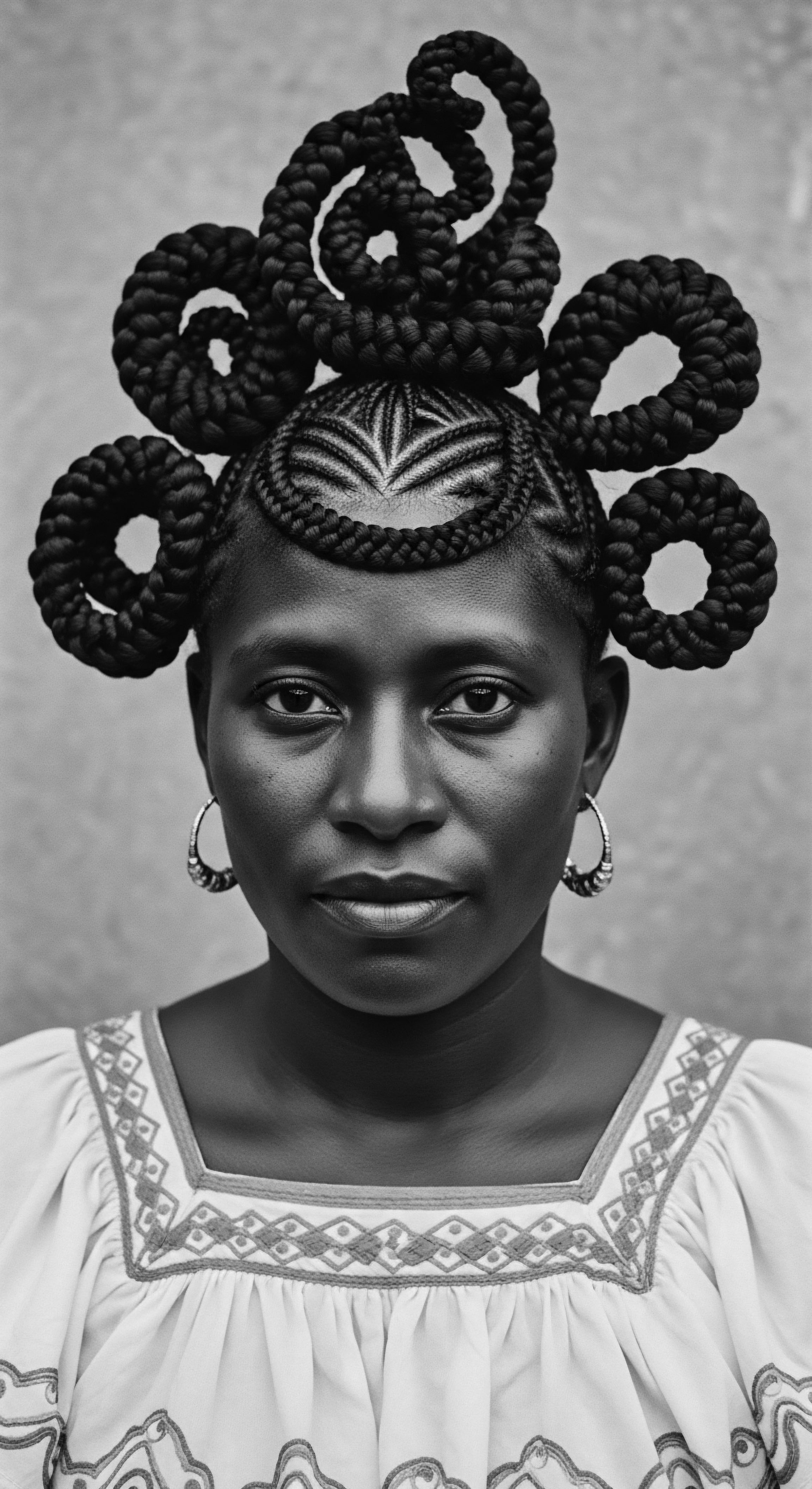
Roots
Consider the deep breath of the continent, the sun-drenched earth, and the hands that learned its secrets across countless generations. For those with textured hair, this history is not distant; it lives within each curl and coil, a testament to an ancestral wisdom that understood wellness long before modern laboratories existed. This is a journey to understand the foundational elements of hair health, as revealed by traditional African communities. It speaks to a deep, abiding respect for the earth’s provisions and a profound understanding of the human body as a sacred vessel.
Long before standardized products filled shelves, African communities turned to the land for their needs. They observed, experimented, and passed down knowledge through the intimate act of communal grooming. This ancestral understanding of hair, its diverse forms, and its connection to overall wellbeing, shaped practices that continue to guide us. The very structure of textured hair, often characterized by its unique elliptical cross-section and propensity for dryness, meant that care rituals centered on moisture, protection, and nourishment.
These were not mere cosmetic applications; they were expressions of identity, social standing, and spiritual connection. Hair was often viewed as a conduit for spiritual energy, particularly the crown of the head. This reverence meant meticulous attention to its care, emphasizing ingredients that resonated with the hair’s natural inclinations and the body’s holistic needs.

Hair’s Intrinsic Design and Ancestral Insight
Textured hair, with its diverse curl patterns—from broad waves to tightly packed coils—possesses a distinct physiology. Its elliptical or flattened shaft, a structural difference from straight hair, often leads to fewer cuticle layers and a greater susceptibility to moisture loss. This inherent characteristic was keenly observed by traditional African communities. Their solutions were not about altering the hair’s natural design but rather about enhancing its natural resilience and beauty.
They understood that hydration and protection were paramount for hair that could be both robust and pliable, capable of holding intricate styles for extended periods. This deep, experiential knowledge predates microscopic analysis, yet its principles align with modern scientific understanding of fiber properties. The ingredients they chose addressed the hair’s unique needs, contributing to elasticity and strength.

Traditional Lexicon and Cultural Classifications
The way African communities spoke about hair reflected its profound importance. While modern systems categorize hair by types and porosity, ancestral lexicons often wove together physical attributes with cultural meanings. Hairstyles, and by extension the hair itself, communicated age, marital status, social rank, ethnic identity, and spiritual beliefs. For instance, the Yoruba people of Nigeria used styles like Irun Kiko, a form of thread-wrapping, not just for aesthetic appeal but also to signify femininity, marriage, and rites of passage.
Hair in many African cultures was a living canvas, reflecting an individual’s journey, community ties, and spiritual connection.
This cultural understanding also shaped the classification of hair itself. It was not merely hair; it was a symbol, a narrative. The meticulousness in preparing and applying ingredients was a part of this cultural grammar, a silent language spoken through meticulous grooming and shared rituals.

How Did Regional Ecosystems Shape Hair Practices?
The vast and varied landscapes of Africa dictated which ingredients were locally accessible and, therefore, became staples in regional hair care traditions. Communities developed ingenious methods for extracting the vital elements from their immediate environments.
- West African Shea Butter ❉ From the shea tree (Vitellaria paradoxa) prevalent in the Sahel belt, Shea Butter was, and remains, a foundational emollient. Its richness in vitamins A and E, alongside essential fatty acids, made it indispensable for moisturizing and protecting textured hair from harsh climates.
- North African Argan Oil ❉ The Argan tree (Argania spinosa), native to Morocco, yielded a prized oil. Argan Oil, packed with vitamin E and antioxidants, served as a nourishing and strengthening agent for hair, preventing dryness and promoting a healthy sheen.
- Central African Chebe Powder ❉ The Basara Arab women of Chad are known for their exceptional hair length, attributed to the use of Chebe Powder. This blend of plant extracts, including Croton zambesicus, cloves, and resin, was used to coat hair, reducing breakage and retaining moisture.
These examples illustrate a profound ecological harmony, where communities lived in tandem with their environment, understanding its offerings for holistic wellness, including hair care.
| Ingredient Shea Butter |
| Primary Traditional Use Moisturizer, protective balm |
| Key Benefit for Textured Hair Deeply hydrating, seals moisture, high in vitamins A and E |
| Ingredient Argan Oil |
| Primary Traditional Use Nourishing treatment, shine enhancer |
| Key Benefit for Textured Hair Rich in antioxidants, strengthens hair, adds luster |
| Ingredient Chebe Powder |
| Primary Traditional Use Length retention, breakage prevention |
| Key Benefit for Textured Hair Coats hair strands, reduces friction, aids moisture retention |
| Ingredient African Black Soap |
| Primary Traditional Use Cleanser for hair and scalp |
| Key Benefit for Textured Hair Gentle cleansing, clarifies without stripping |
| Ingredient These ancestral ingredients formed the foundational elements of textured hair care across African communities. |

Ritual
The care of textured hair in traditional African communities extended beyond mere ingredient application; it was embedded within intricate rituals, communal gatherings, and a profound respect for personal and collective identity. These practices, honed over centuries, transformed the functional act of grooming into an artistic expression and a social event. Each twist, braid, and adornment contributed to a visual language that articulated an individual’s place within their world.
These traditions reflect a philosophy where beauty was inextricably linked to wellness, heritage, and belonging. The very act of caring for hair became a thread connecting generations, an exchange of wisdom as much as it was a physical process.

Protective Styling as an Ancestral Art
Protective styling, now a cornerstone of modern textured hair care, finds its deepest roots in ancient African practices. These styles were not solely for aesthetic appeal; they served the practical purpose of shielding delicate strands from environmental elements, minimizing manipulation, and aiding length retention. Styles like cornrows, braids, and locs were meticulously crafted, often taking hours, and were seen as both protective and communicative.
- Cornrows ❉ Intricate patterns woven close to the scalp, these styles protected the hair root and allowed for long-lasting wear, often adorned with beads or cowrie shells. During the transatlantic slave trade, enslaved African women even braided rice seeds into their hair for survival.
- Braids and Twists ❉ Varying in size and complexity, these styles minimized tangling and breakage, promoting healthy growth. Communal braiding sessions served as important social activities, allowing for storytelling and the transmission of cultural knowledge.
- Hair Threading ❉ Among the Yoruba people of Nigeria, Irun Kiko involved wrapping hair sections with flexible threads, creating three-dimensional patterns that stretched the hair and protected it from breakage. This technique highlights an ingenious approach to managing hair length and promoting health without relying on heat or harsh chemicals.
The longevity of these styles meant that the hair beneath could remain moisturized and undisturbed, an early form of low-manipulation care. Ingredients were applied before, during, and after these styling processes, ensuring that the protective benefits were maximized. The deliberate use of plant-based oils and butters, like shea butter or palm kernel oil, would provide a nourishing layer, reducing friction and environmental exposure.

What Plant-Derived Oils Supported Ancient Hair Practices?
Oils extracted from indigenous plants were fundamental to traditional African hair care, revered for their ability to moisturize, seal, and protect. They served as vital emollients, particularly for textured hair, which tends to be drier due to its structure.
Consider the golden liquid of Marula Oil (Sclerocarya birrea), a traditional element from Mozambique and South Africa. It was employed as a moisturizer and even as a shampoo for dry hair, its rich fatty acid profile making it an excellent source of hydration. Another significant oil was derived from the Baobab Tree (Adansonia digitata), its seed oil known for deep moisturizing properties and a spectrum of vitamins.
These oils were often warmed, perhaps infused with herbs, and gently massaged into the scalp and along the hair shaft. This practice not only distributed the nourishing properties but also stimulated blood circulation, which contributes to overall scalp health.
Traditional African hair care rituals embodied a holistic approach, where styling and ingredient use were inseparable acts of cultural continuity and well-being.
The selection of these oils was not random; it was informed by generations of practical application and observation, a living pharmacopeia of the land. They were applied as leave-in treatments, pre-shampoo oils, or mixed into cleansing agents. This systematic approach ensured that hair remained supple and less prone to breakage, which is a common concern for textured hair types.

Tools Shaped by Tradition
Traditional tools used in African hair care were simple yet effective, often crafted from natural materials. The Dua’afe, a wooden comb from Ghana, holds deep cultural meaning, symbolizing femininity and beauty. These wide-toothed combs, designed to glide through textured hair with minimal pulling, were instrumental in detangling and styling. Hair picks, often made of wood or bone, helped in shaping and lifting voluminous styles.
The use of natural fibers and simple, durable implements meant that hair care was an accessible practice, integrated into daily life without reliance on complex machinery. These tools were not just instruments; they were extensions of the hands that groomed, passed down, and often carried spiritual or symbolic significance within the community.

Relay
The wisdom of traditional African hair care continues its journey, echoing through time and across the diaspora. This knowledge, once transmitted through oral tradition and hands-on practice, now finds itself juxtaposed with modern scientific understanding, revealing a profound congruence between ancestral ingenuity and contemporary research. It is a dialogue between the past and present, highlighting the enduring relevance of heritage-rooted practices for textured hair health.
The meticulous regimens of past communities provide a blueprint for holistic care, addressing the unique needs of curls and coils with ingredients validated by both long-standing experience and scientific inquiry. This relay of knowledge strengthens the concept of hair care as an act of self-reverence and cultural affirmation.

Holistic Care for Textured Hair From Ancient Wisdom
Traditional African communities understood that hair health was not isolated from overall well-being. Their approach was inherently holistic, connecting diet, spiritual practices, and environmental factors to the vitality of the hair and scalp. This integrated view meant that hair care ingredients often possessed multi-purpose benefits, serving both topical application and sometimes internal consumption. The use of ingredients like Rooibos Tea, traditionally grown in South Africa, exemplifies this.
Beyond its topical use as a hair rinse, it was consumed as a caffeine-free beverage, recognized for its antioxidant and antimicrobial properties that could benefit overall health, including hair growth. Similarly, Ghee, a clarified butter used in Ethiopian communities, was applied to hair for moisture and strength and also formed part of their diet.
This holistic philosophy contrasts with a purely superficial approach to hair. It suggests that true radiance begins from within and is supported by practices that honor the body’s interconnected systems. The remedies for issues like dry scalp or breakage were often derived from this comprehensive understanding, drawing upon the inherent healing properties of plants.

Does Modern Science Validate Ancient Hair Remedies?
Contemporary scientific research increasingly aligns with the efficacy of ingredients long used in traditional African hair care. Studies have begun to decode the biochemical compounds that give these natural resources their power, offering validation for ancestral practices. For instance, the fatty acids in shea butter and marula oil are now understood to provide deep hydration and protective barriers, mirroring their traditional moisturizing roles.
The synergy between ancestral practices and modern scientific understanding paints a fuller portrait of textured hair health.
A study focusing on African plants used for hair conditions identified 68 plant species, with 30 of them showing research associated with hair growth and general hair care. This research often examines mechanisms like 5α-reductase inhibition, relevant for hair loss, or the rate of telogen to anagen phase transition, which influences hair growth cycles (Adebayo et al. 2024, p. 2).
This scientific inquiry provides a deeper explanation for why certain plants, like those in the Lamiaceae family (e.g. certain mints or basils), were effective in traditional remedies for issues like baldness or dandruff. The study emphasizes that while modern science might analyze these properties through a pharmaceutical lens, a nutritional interpretation, where these plants offer a general improvement to local glucose metabolism, might be more fitting, suggesting a systemic benefit from topical application.
This growing body of evidence highlights that traditional knowledge was not simply anecdotal; it was built upon generations of careful observation and effective application, providing a fertile ground for future ethnobotanical research.

Ancestral Approaches to Scalp Wellness
A healthy scalp serves as the foundation for healthy hair. Traditional African communities addressed various scalp conditions using natural remedies that cleansed, soothed, and provided antifungal or antibacterial benefits.
- African Black Soap ❉ Known as Ose Dudu or Alata Samina, this traditional West African soap, often made from plantain skins, cocoa pods, and palm oil, was used as a gentle cleanser for both skin and scalp. Its ability to purify without stripping natural oils made it ideal for maintaining a balanced scalp environment.
- Rhassoul Clay ❉ Originating from Morocco, this mineral-rich clay served as a natural mud wash, cleansing the hair and scalp without removing beneficial properties. Its drawing properties helped to remove impurities and soothe irritation.
- Neem Oil ❉ Derived from the neem tree (Azadirachta indica), this oil was used for its antifungal properties, helping to prevent dandruff and other scalp issues. It was often mixed with other oils for a comprehensive scalp treatment.
- Aloe Vera ❉ The gel from the Aloe Vera plant was widely applied for its soothing and moisturizing properties, addressing dryness and irritation on the scalp. Its cooling effect would have provided immediate relief for an inflamed scalp.
These ingredients and practices collectively represent a sophisticated system of hair and scalp care, deeply rooted in the ecological and cultural landscapes of Africa, consistently reflecting an understanding of what textured hair needs to thrive.

Reflection
The journey through traditional African hair care is more than a historical recount of ingredients and techniques; it is an invitation to rediscover a profound connection to self and lineage. The ‘Soul of a Strand’ ethos reminds us that textured hair carries the echoes of resilience, creativity, and deep cultural reverence. The ancestral ingredients—shea butter, chebe powder, marula oil, African black soap—are not simply botanical extracts; they are artifacts of ingenuity, living testaments to generations that understood the earth’s bounty and its symbiotic relationship with human well-being.
This heritage is a living archive, not a static monument. It compels us to consider not just what was used, but how it was used—with intention, community, and an inherent understanding of holistic health. The intricate braids, the shared moments of grooming, the mindful application of nourishing oils; these were practices that built identity, reinforced belonging, and safeguarded cultural memory in the face of immense challenges. As we look to the future of textured hair care, the wisdom passed down through these traditions provides an invaluable compass.
It directs us toward natural solutions, sustainable practices, and a care philosophy that honors the unique biological and cultural journey of every coil and curl. The legacy of these ingredients and rituals encourages a continuous dialogue with the past, ensuring that the wisdom of our ancestors remains a guiding light for future generations.

References
- Adebayo, O.J. Oluwa, O.K. Omolokun, K.T. Ogbe, A.A. & Adebayo, O.A. (2024). Cosmetic Ethnobotany Used by Tribal Women in Epe Communities of Lagos State, Nigeria. Journal of Complementary Medicine & Alternative Healthcare, 12(4), 555845.
- Byrd, A. & Tharps, L. (2201). Hair Story ❉ Untangling the roots of black hair in America. St. Martin’s Press.
- Chapman, Y. (2007). “I am not my hair! Or am I?” ❉ Black women’s transformative experience in their self perceptions of abroad and at home. Master’s thesis.
- Jere-Malanda, R. (2008). Black women’s politically correct hair. New African Woman, 14-18.
- Rooks, N. (1996). Hair Raising ❉ Beauty, culture and African American women. Rutgers University Press.
- Sieber, R. & Herreman, D. (2000). Hair in African Art and Culture. Museum for African Art.
